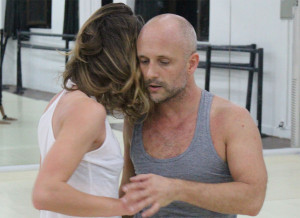The beauty of the gesture
Artist in residence at the University of Montpellier, Leonardo Montecchia tracks our everyday movements. An encounter with a unique observer of the body in motion.
I have a problem with the word choreographer, he warns. I see myself more as a thinker of the body, a body in relation to its environment.

This reluctance to be confined, even within a definition, is undoubtedly what made Leonardo Montecchia the eternal traveler who lived on three continents before the age of 30, pounding the pavement of London, Buenos Aires, New York, and Paris. More than a dancer or choreographer, he is a creator dedicated to movement...
In search of the useless gesture
One day in 2001, Leonardo "ended up in Montpellier." He is still there, sometimes a little surprised that he has not yet left. An artist in residence at the University of Montpellier until April, he has come to do what he loves: explore new paths in this "city within a city" with its 45,000 students and 4,500 staff members.
For several months, Leonardo and his interpreters will live among the inhabitants of this university planet: rubbing shoulders with them, observing them. Studying them."Questioning everyday gestures," he explains, "those of students, teachers, researchers, and staff. Gestures of transmission, of work, but also of reflection, of impatience..."
What he is specifically looking for in lecture halls, labs, classrooms, and libraries is the useless gesture. A uselessness that he immediately places in the realm of life. Of the priceless.
In today's hyper-productive society, what place is there for actions that "serve no purpose"? In the field of learning, what space is there for the useless? Is it that of inaction? Of reflection?
Another look at his daily life
Leonardo is at home in the academic world. There, he pursues his constant search for contemporary art that draws inspiration from everyday life and appeals to everyone. His quest for "another possible body: a body to be imagined. Art helps us to see reality in a different light. To build a different world."
This project is particularly well suited to a university setting: "This is where we shape the future! The university is fundamentally an artistic place: a place of learning and research, but also of questioning and raising awareness. It is a space for creation, strongly linked to the imagination."
The residency will culminate in April with a performance open to all. A choreographic work featuring five performers and divided into several walking pieces, where students, staff, and visitors to the university will be led from place to place, across several UM sites. "The artist residency invites everyone to take a different look at their daily lives. It should also allow the public to enter the heart of the university and discover it for what it is: a space open to the world and society," explains Marta Cases Bobadilla, from the art & culture department.